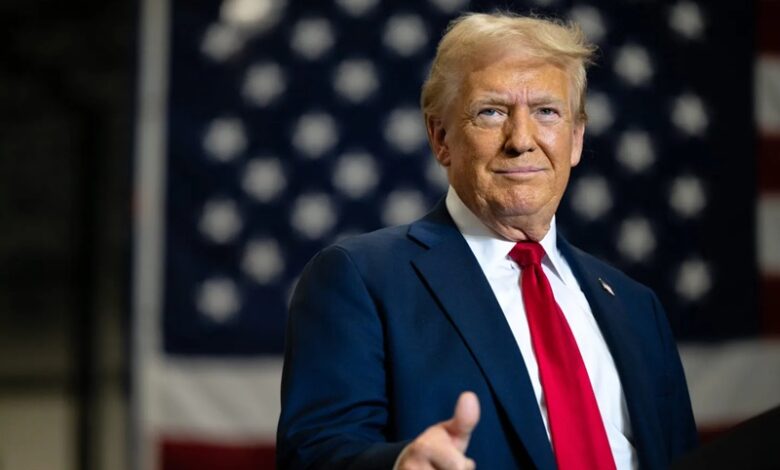Trump says he will tariff and tax foreign countries. Trouble for India?
News Mania Desk \ Piyal Chatterjee \ 21th january 2025

On Monday, US President Donald Trump announced plans to implement tariffs and taxes on “foreign nations” “to benefit” Americans and stated he would establish an “external revenue service” to gather “large sums” of duties and other income from overseas.
During his inauguration speech, Trump stated that he would promptly start revamping the trade system in the US to safeguard American interests. Nonetheless, he did not specify particular tariff strategies during his inaugural speech. Trump, who assumed office on Monday, has promised a 10 percent tariff on worldwide imports, a 60 percent tariff on goods from China, and a 25 percent import fee on products from Canada and Mexico.
Regarding Canada and Mexico, Trump cautioned that he would impose tariffs on these nations if they did not halt illegal immigration into the US and take action against drug cartels. Trump’s commitment to establish a trade policy of “tariff and tax” towards other nations also has considerable consequences for countries such as India, which currently levies substantial tariffs on various US goods. However, would Trump’s tariff proposals for nations impact India, which he previously referred to as the “king of tariffs”?
The 78-year-old Republican leader has consistently condemned nations, including India, for their high tariffs on American goods in the past. He cautioned that if nations such as India impose high tariffs on American products, Washington would respond with equivalent tariffs on imports from India. Last December, Trump stated clearly that his administration would take a tit-for-tat stance, asserting, “If they tax us, we tax them the same amount.”
“The word reciprocal is important because if somebody charges us – India, we don’t have to talk about our own – if India charges us 100 per cent, do we charge them nothing for the same? You know, they send in a bicycle, and we send them a bicycle. They charge us 100 and 200. India charges a lot,” he said.
Trump’s stance is rooted in his “America First” trade policy, aimed at protecting American workers and families. He said in his inauguration address that his policies would make the US a “a manufacturing nation once again”.
An official from the Trump administration stated that the President will release a comprehensive trade memo on Monday, which refrains from implementing new tariffs on his initial day in office, instead instructing federal agencies to assess US trade connections with China, Canada, and Mexico.
In December of the previous year, Trump warned of imposing 100 percent tariffs on BRICS countries, such as India, if they pursued a common currency to supplant the US dollar, stating they “should say goodbye to America” and “should seek another fool.” His 100 percent tariff threat to BRICS nations followed the bloc’s gathering in Kazan, Russia, in October, where they talked about enhancing transactions not involving the dollar. His caution prompted a measured reaction from External Affairs Minister S Jaishankar, who indicated that it was very probable that the BRICS nations would persist in global trade utilizing their own currencies.
“The general sentiment is that many people ask, ‘What is the necessity of a third currency between us?’ which is entirely reasonable.” At times, it’s a matter of liquid. “At times, it revolves around cost and efficiency,” he stated in August of the previous year.
India’s leading trading partner in both 2021-2022 and 2022-2023 was the US. Nevertheless, in 2023-2024, India’s largest trading partner became China. During the January-July 2024 timeframe, the US regained its status as India’s top trading partner, with two-way goods trade exceeding USD 72 billion and Indian exports increasing to USD 48.2 billion, as reported.
Trump’s warning about reciprocal tariffs could significantly affect India’s export sector, especially sectors that are heavily dependent on the US market. Indian exporters may encounter increased entry barriers, causing their products to become less competitive in the US market. This situation could result in decreased sales and revenue for Indian companies, which might impact employment and economic development within the nation.
The economic effects of these tariffs extend beyond just trade balances. It may also lead to increased consumer prices in both nations. When tariffs raise the expenses of imports, US businesses might transfer these increased costs to consumers, resulting in inflation. Likewise, Indian buyers may encounter increased costs for goods imported from the US, putting additional pressure on family finances. In light of these threats, India may have to reevaluate its trade policies and pursue diplomatic initiatives to secure better trade conditions with the US.






